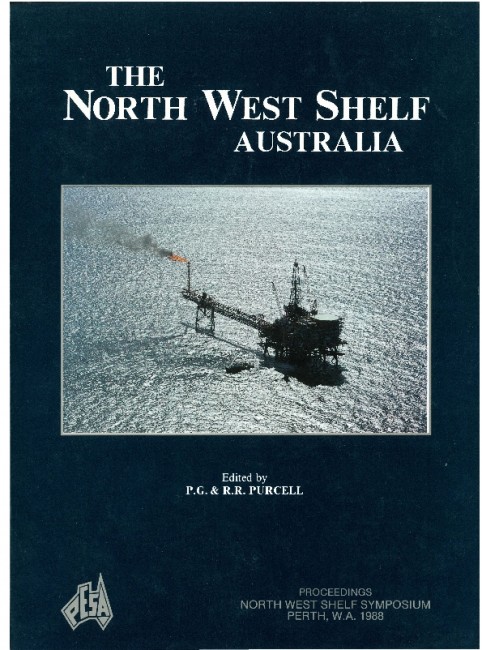Publication Name: The North West Shelf Australia
Authors: R. de Boer and L.B. Collins
Date Published: July 1988
Number of Pages: 22
Reference Type: Book Section
Abstract:
The Flag Sandstone, a thick sequence of massive sandstones with minor intercalated claystones, is the producing reservoir in the Harriet Oilfield and other hydrocarbon accumulations in permit WA-192-P in the Barrow Sub-basin. The sandstones are homogeneous, medium grained, poorly to moderately well sorted quartz arenites which were originally derived from an igneous plutonic provenance. They were originally river sands of the Barrow delta but have been reworked and re-deposited as part of a deepsea submarine fan.Deposition consisted of high energy massflows with minor hemipelagic sedimentation. Massflow deposits have an erosional base and consist of massive sands and waning traction current deposits, which are overlain by
suspension deposits. The claystones were deposited by suspension, traction currents and gravity flows.
Authigenic quartz is the main cement, enclosing earlier siderite and kaolinite. Early diagenetic siderite is a minor component in most sands, occurring as concretions, gradational bands, haloes around claystone fragments, at erosional boundaries and as clasts. With increasing depth of burial early micritic siderite was partially recrystallized. Kaolinite formed as a pore filling and lining phase, both before and synchronous with authigenic quartz.
The Flag Sandstone is an excellent petroleum reservoir, with an average porosity of 22 percent and permeabilities of 800 to 2000 millidarcies in the Harriet Field. Vertical permeabilities are high, suggesting a
significant risk of coning water during production. Claystones and tightly cemented sideritized zones form
vertical permeability barriers which enhance reservoir properties.


